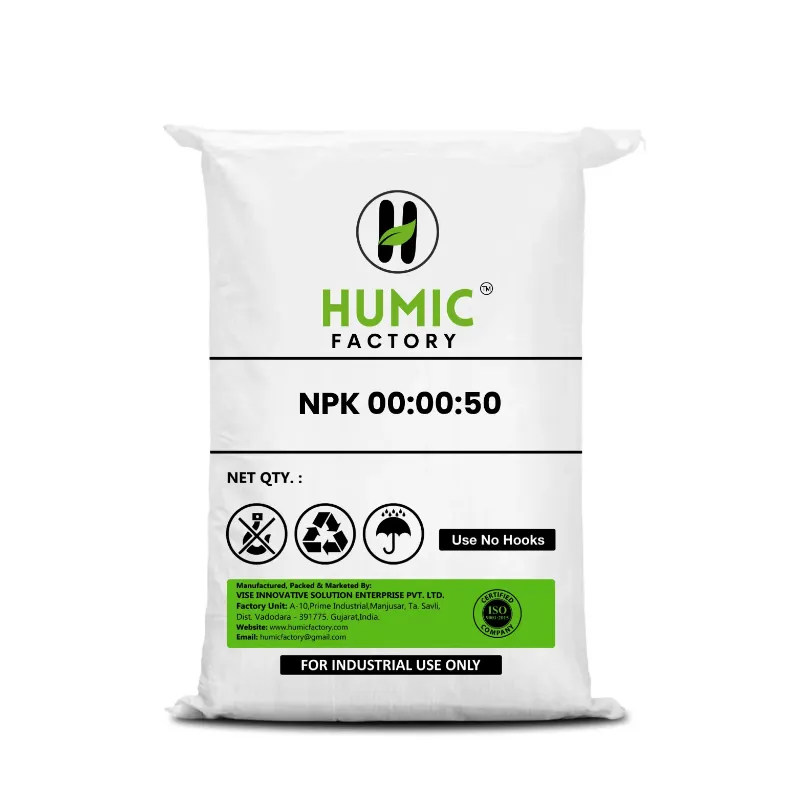In the world of sustainable agriculture, biofertilizers play a crucial role in enhancing soil fertility and promoting healthy plant growth without the need for synthetic chemicals. Humic Factory, a leader in organic agricultural solutions, offers two primary types of biofertilizers: granular and liquid. While both types are designed to improve soil health and boost crop yields, they differ in their composition, application methods, and the specific benefits they provide. Understanding these differences is essential for farmers looking to maximize the effectiveness of their fertilization practices. This blog will explore the key differences between Humic Factory’s granular and liquid biofertilizers, discuss how each should be used, and offer tips on how farmers can integrate these products into their farming practices for optimal results. The most apparent difference between Humic Factory’s granular and liquid biofertilizers is their physical form and composition. Both types of biofertilizers provide essential nutrients and promote microbial activity in the soil, but the choice between them depends on the specific needs of the crop and the desired outcome. The application of granular and liquid biofertilizers differs significantly due to their form and how they interact with the soil and plants.
One of the most important differences between granular and liquid biofertilizers is the speed at which they deliver nutrients to plants.1. Composition and Form
Granular Biofertilizers: These biofertilizers come in solid, pellet-like granules. They are designed to release nutrients slowly over time as they break down in the soil. Granular biofertilizers typically contain organic matter such as humic acid, plant-based extracts, and beneficial microbes in a stable form. They are often used to enhance long-term soil health by gradually enriching the soil with essential nutrients and improving its structure.
Liquid Biofertilizers: Liquid biofertilizers, on the other hand, come in a liquid form that can be easily mixed with water. They contain a high concentration of beneficial microorganisms, enzymes, and plant growth-promoting substances. Liquid biofertilizers are absorbed quickly by plants, providing an immediate nutrient boost and enhancing microbial activity in the soil.
2. Application Methods
Granular Biofertilizers: Granular biofertilizers are typically applied by broadcasting or direct soil incorporation. This means they are spread evenly over the soil surface or mixed into the soil during plowing or planting. These biofertilizers are best suited for crops that require slow, sustained nutrient release over a longer period. The granules break down gradually, releasing nutrients as they decompose, ensuring that plants receive a steady supply of nutrients throughout their growth cycle.Granular biofertilizers are particularly effective for long-term crops like trees, vines, and perennials. They are also ideal for large-scale farming operations where regular fertilization is not always feasible. Farmers can apply granular biofertilizers during land preparation, sowing, or at the beginning of the growing season to ensure continuous nutrient availability.
Liquid Biofertilizers: Liquid biofertilizers are applied by spraying or through irrigation systems. This allows for even distribution of the product over the plant canopy or root zone. Because liquid biofertilizers are absorbed quickly, they are ideal for crops that require an immediate nutrient boost or for addressing specific nutrient deficiencies.Liquid biofertilizers can be applied throughout the growing season, often in conjunction with irrigation. They are suitable for foliar feeding, where nutrients are sprayed directly onto the leaves, allowing for rapid absorption through the plant’s foliage. This method is highly effective for vegetables, cereals, and crops that have shorter growing seasons or need periodic nutrient boosts.
3. Speed of Action
Granular Biofertilizers: Due to their solid form, granular biofertilizers release nutrients slowly and over an extended period. This slow-release action makes them ideal for crops that need consistent nutrient levels throughout their growth cycle. The gradual decomposition of the granules ensures that the soil remains enriched for months, supporting long-term soil fertility.Granular biofertilizers are perfect for crops that require slow, sustained growth, such as fruit trees, vines, and tubers. Their slow-release nature also reduces the risk of nutrient leaching, making them an environmentally friendly option.
Liquid Biofertilizers: Liquid biofertilizers, on the other hand, work quickly, providing plants with an immediate nutrient boost. They are rapidly absorbed by plant roots or leaves, making them an excellent choice for crops that require quick recovery from nutrient deficiencies or for farmers looking to enhance crop growth during critical stages like flowering or fruiting.
Liquid biofertilizers are especially useful for fast-growing crops like leafy vegetables, herbs, and cereals. They can also be applied in emergency situations, such as when crops show signs of nutrient stress or during periods of rapid growth when nutrient demand is high.4. Targeted Use Cases
Each type of biofertilizer is suited for different farming scenarios and crop types.
Granular Biofertilizers: These are ideal for crops that benefit from slow and steady nutrient release, such as perennials, fruit-bearing plants, and deep-rooted crops. They are also suitable for improving the overall soil structure and fertility over the long term. Granular biofertilizers can be applied during land preparation, reducing the need for frequent applications throughout the growing season.Granular biofertilizers are also beneficial for improving the organic matter content of the soil. They help increase the soil’s water-holding capacity, making them ideal for dry or arid regions where water conservation is critical.
Liquid Biofertilizers: Liquid biofertilizers are best for crops that need a quick nutrient fix or for addressing specific nutrient deficiencies. They are perfect for short-season crops like vegetables and for farmers who use drip irrigation or other water-efficient systems. Liquid biofertilizers can also be used as a foliar spray to enhance nutrient uptake through the leaves, providing immediate benefits during critical growth stages.
Additionally, liquid biofertilizers are useful in organic farming systems where the regular application of organic inputs is necessary to maintain soil fertility and promote healthy crop growth.5. Environmental Impact
Both granular and liquid biofertilizers from Humic Factory are designed to reduce the reliance on chemical fertilizers and promote sustainable farming practices. However, their environmental impacts vary based on their application methods.
Granular Biofertilizers: Granular biofertilizers tend to have a lower risk of runoff and nutrient leaching because of their slow-release nature. This makes them ideal for use in areas with high rainfall or irrigation, where nutrients can easily be washed away. By gradually releasing nutrients, granular biofertilizers ensure that plants can absorb them over time, reducing the risk of environmental contamination.
Liquid Biofertilizers: While liquid biofertilizers offer rapid nutrient availability, they can pose a higher risk of runoff if applied incorrectly or in excess. Farmers should ensure that they apply liquid biofertilizers evenly and avoid over-spraying to minimize the potential for nutrient loss. Properly applied, liquid biofertilizers can support sustainable agriculture by reducing the need for synthetic chemicals and promoting healthier plant-soil ecosystems.
6. Cost and Efficiency
When considering the cost and efficiency of Humic Factory’s granular and liquid biofertilizers, both options offer significant benefits, but their cost-effectiveness depends on the specific farming needs.
Granular Biofertilizers: These biofertilizers may require a higher initial investment due to the quantity needed to cover large fields. However, because they release nutrients slowly, fewer applications are required over time, making them a cost-effective option for farmers looking for long-term soil improvement.
Liquid Biofertilizers: Liquid biofertilizers can be more cost-effective for small-scale or intensive farming operations where quick nutrient uptake is necessary. Since they are applied more frequently, farmers can better control the amount used, ensuring that crops receive exactly what they need at each growth stage.
Conclusion
Humic Factory’s granular and liquid biofertilizers each offer unique advantages that cater to different farming needs. Granular biofertilizers provide slow, sustained nutrient release, making them ideal for long-term soil health and crops with extended growth periods. Liquid biofertilizers, on the other hand, offer rapid nutrient delivery, perfect for short-season crops or when plants need an immediate nutrient boost.
To maximize the benefits of both types of biofertilizers, farmers should consider their specific crop requirements, soil conditions, and long-term farming goals. By integrating the appropriate biofertilizer into their farming practices, they can improve soil health, boost crop productivity, and promote sustainable agriculture.





